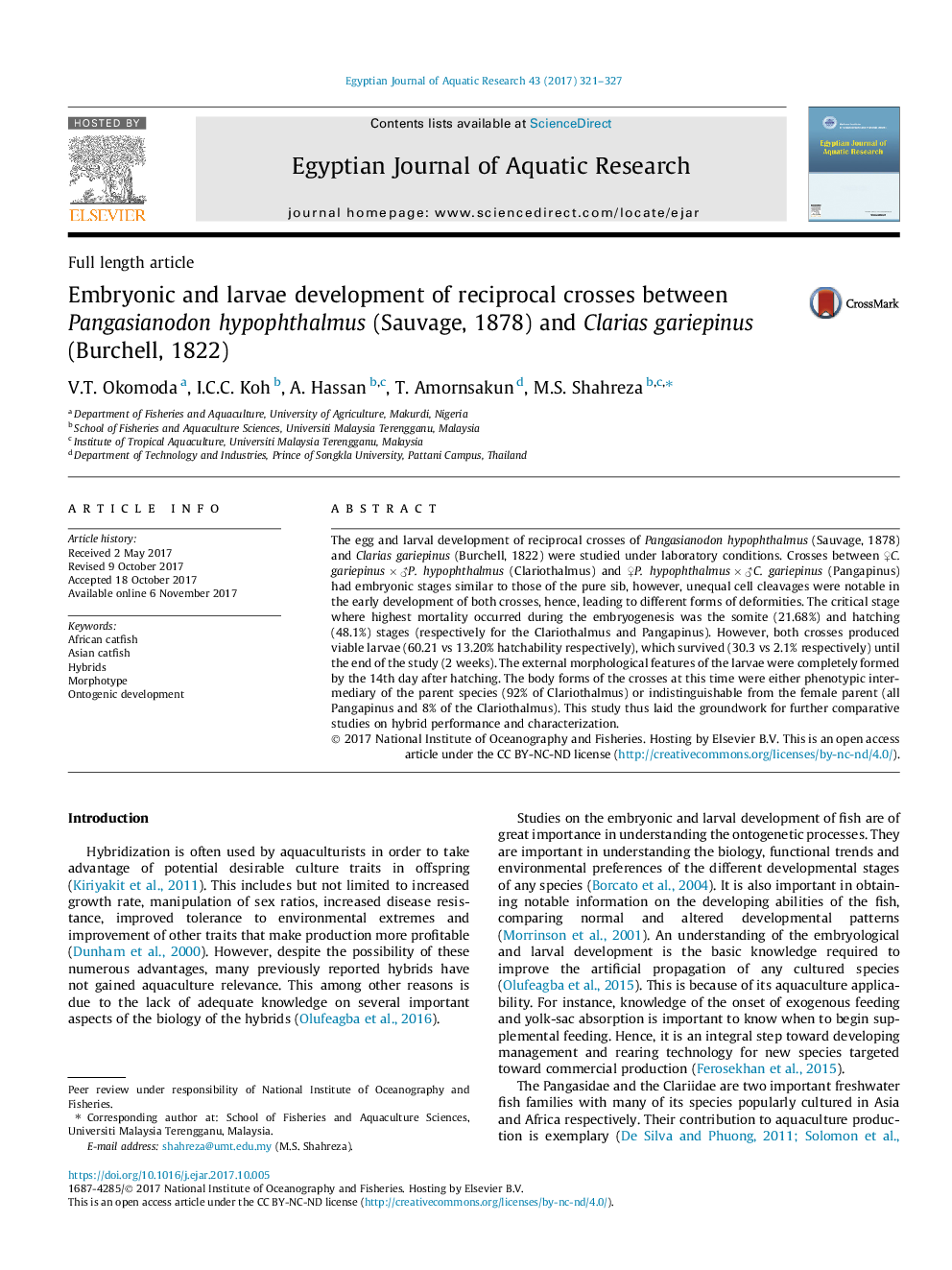| Article ID | Journal | Published Year | Pages | File Type |
|---|---|---|---|---|
| 8875228 | The Egyptian Journal of Aquatic Research | 2017 | 7 Pages |
Abstract
The egg and larval development of reciprocal crosses of Pangasianodon hypophthalmus (Sauvage, 1878) and Clarias gariepinus (Burchell, 1822) were studied under laboratory conditions. Crosses between âC. gariepinusâ¯Ãâ¯âP. hypophthalmus (Clariothalmus) and âP. hypophthalmusâ¯Ãâ¯âC. gariepinus (Pangapinus) had embryonic stages similar to those of the pure sib, however, unequal cell cleavages were notable in the early development of both crosses, hence, leading to different forms of deformities. The critical stage where highest mortality occurred during the embryogenesis was the somite (21.68%) and hatching (48.1%) stages (respectively for the Clariothalmus and Pangapinus). However, both crosses produced viable larvae (60.21 vs 13.20% hatchability respectively), which survived (30.3 vs 2.1% respectively) until the end of the study (2â¯weeks). The external morphological features of the larvae were completely formed by the 14th day after hatching. The body forms of the crosses at this time were either phenotypic intermediary of the parent species (92% of Clariothalmus) or indistinguishable from the female parent (all Pangapinus and 8% of the Clariothalmus). This study thus laid the groundwork for further comparative studies on hybrid performance and characterization.
Related Topics
Life Sciences
Agricultural and Biological Sciences
Agricultural and Biological Sciences (General)
Authors
V.T. Okomoda, I.C.C. Koh, A. Hassan, T. Amornsakun, M.S. Shahreza,
